| The Lilith Library
Synopsis: Lilith was once known as a Sumerian fertility/agricultural goddess, but over the years has been demonified by other religions into the modern myth of succubi. Lilith (or Lilitu) has over 100 names and variations in myths ranging from Ancient Sumeria to Jewish Mysticism to tribal Malayasia to myths about the Third Millenium. She is the first wife of Adam (before Eve) according to the Jewish myth. She is a Sumerian fertility/agricultural goddess, and she is the Greek goddess of the dark moon. She is the mother of all succubi. She is perhaps the most identifiable incarnation of historical feminism and men's fear of feminist idealogy (Judeo-Christian men used female icons to increase feminine demonification, essentially by lying and spreading rumours).
The Origin of Lilith:
In both Arabic and Jewish myths however, she is a succubus (plural: succubi). A demon-woman who hunts men, seduces them and drains their life with a kiss. Jewish mothers believed Lilith would come to take their children away and eat them. Its a bit like the German myth of Struwwelpeter. "Eat your food and stay clean or else Struwwelpeter will get you!" Every religion known to mankind has some kind of "evil woman" myth. Quite a few of them bear a startling resemblance to Lilith. Lilith has many different names, such as Marilith or Lilitu, but all of them connect with the common theme: A demon woman, often with wings, who kills men and sometimes children: A succubus. Of course, there is also legends about incubi (singular: incubus), but these should not be confused with succubi (which is the plural of succubus). The incubi are fallen angels in Judeo-Christianity who fell to earth because they had sex with mortal women. Since then incubi have stalked the earth, seducing women in their dreams and impregnating them. According to Christian myth, the children of incubi grow up to become rapists. There are many different legends and sources from multiple religions that refer to Lilith, and none of them are complete. Only after looking at all of them (preferably in chronological order) does a person gain a better understanding of what Lilith was, and what her myth has become.
Sumerian/Akkadian:Some people believe that Lilith is also "ki-sikil-lil-la-ke", a female demon in the prologue to the Gilgamesh epic. This however is simply a linguistic connection because the word "lil" means "nocturnal" in Hebrew. Kramer translates:
a dragon had built its nest at the foot of the tree
the Zu-bird was raising its young in the crown,
and the demon Lilith had built her house in the middle.
[...]
Then the Zu-bird flew into the mountains with its young,
while Lilith, petrified with fear, tore down her house
and fled into the wilderness
Wolkenstein translates the same passage:
a serpent who could not be charmed made its nest in the roots of the tree,
The Anzu bird set his young in the branches of the tree,
And the dark maid Lilith built her home in the trunk.
Moffat translates the same passage:
a wily serpent made its nest beneath the tree,
The Zu-bird raised its children in the tree branches,
and the nocturnal demon had made its home in the middle.
[...]
Then the Zu-bird flew into the hills with its children,
while the night-demon, fear-crazed, ripped down its home
and fled into the wilderness
It is Moffat's belief that "ki-sikil-lil-la-ke" is not a demon at all, but simply an owl. It is reasonable to assume that people had superstitious beliefs about owls and knew little about them at the time. An owl, you will note, is also one of the creatures sacred to the fertility goddess.
Babylonian/Mesopotamian:By 9th Century BC the Mesopotamian area had changed dramatically. Vampire-like spirits called the Lilu are known from Babylonian demonology. They are nocturnal demons, which hunt and kill newborn babies and pregnant women. Akkadian Lilitu forms a triad with Ardat Lili and Idlu Lili. "Lil" can also mean darkness or storm or wind. Thus these new myths sometimes call them storm/wind demons in addition to being demons of the night. A Sumerian myth tells the story of how Adapa came to break the wings of the South Wind, associated with the summer sand-storms, after which she (the South Wind) vowed enmity to humankind. The south wind was known as Ninlil (Nin = Lady) the wife to Enlil (En = Lord, Lil = Wind), King of the Gods and Lord of the Wind. A separate myth describes how Enlil raped Ninlil, and as punishment he was sent to the underworld domain of Ereshkigal. Ninlil followed him to the underworld, vowing vengeance upon the male gender. Note: Its important to note that Ninlil and Enlil originally lived in the skies. Thus when Enlil was banished to Ereshkigal, he was actually being banished to the surface of the Earth. Ninlil followed him where she later gave birth to children who would become the race known as man. Enlil and Ninlil are essentially the Babylonian origin of Adam and Lilith (or Adam and Eve) and their banishment is comparative to Adam and Eve's banishment from the Garden of Eden. In the transformation from Sumerian myth to Babylonian myth, it is believed that Ninlil became Lilitu (-*itu is the Babylonian feminine marker) (-*u is the Hebrew feminine marker), with her two wild handmaidens Ardat Lili and Idlu Lili (believed to be mariliths, six armed women with the lower body of a snake).
Judaic:# A book by Robert Graves and Raphael Patai (New York: Doubleday, 1964). Graves and Patai have collected traditional Hebrew myths that amplify (and sometimes radically alter) stories found in the Book of Genesis. Chapter 10 of their book deals with Lilith. Each section of the chapter excerpted here recounts a "story" collected from non-biblical sources, frequently the Talmud. A much more extensive discussion of Lilith is found in the The Hebrew Goddess, a book also by Rapael Patai (Wayne State University Press, 3rd edition, 1978). # An essay by Jeffrey Smith.
Christian/The Biblical Lilith:
When the Almighty created the first, solitary man, He said: It is not good for man to be alone. And He fashioned for man a woman from the earth, like him (Adam), and called her Lilith. Soon, they began to quarrel with each other. She said to him: I will not lie underneath, and he said: I will not lie underneath but above, for you are meant to lie underneath and I to lie above. She said to him: We are both equal, because we are both created from the earth. But they did not listen to each other. When Lilith saw this, she pronounced God's avowed name and flew into the air. Adam stood in prayer before his Creator and said: Lord of the World! The woman you have given me has gone away from me. Immediately, the Almighty sent three angels after her, to bring her back. The Almighty said to the Angels: If she decides to return, it is good, but if not, then she must take it upon herself to ensure that a hundred of her children die each day. They went to her and found her in the middle of the Red Sea. And they told her the word of God. But she refused to return. They said to her: We must drown you in the sea. She said: Leave me! I was created for no other purpose than to harm children, eight days for boys and twenty for girls. When they heard what she said, they pressed her even more. She said: I swear by the name of the living God that I, when I see you or your image on an amulet, will have no power over that particular child. And she took it upon herself to ensure that, every day, a hundred of her children died. That is why we say that, every day, a hundred of her demons die. That is why we write the names Senoi, Sansenoi and Semangloph on an amulet for small children. Andwhen Lilith sees it, she remembers her promise and the child is saved. Notes: This version of the myth is one of many, most of which have small translation flaws. Often the bible has been translated from Hebrew to Latin to German and then finally to English. According to accompanying legends, Lilith was cursed and turned into a succubus. God created Eve as an afterthought out of Adam's rib, in order to make her more submissive. Lilith's descendants and Eve's descendants mingled together and bred, and God decreed that Lilith is to kill all of her descendants, except for those protected by an amulet. This belief that Lilith will come to slay young children is still held in awe today in many cultures. As the mother of all other succubi, Lilith's daughters (succubi, or simply Liliths according to some tales) are also held to this and cannot harm any child protected by the amulet. This is Lilith's curse for being too dominating according to many tales, although it is also questioned as to whether the real reason is because she spoke God's avowed name and stole some of gods powers Another legend says that Jehovah (god) and Lilith are actually god and goddess. Although usually the feminine half of god is known as Yahweh. Suggestions also say that because Lilith never ate the forbidden fruit, like Adam and Eve did, Lilith is not tainted by original sin, and thus can never die. She is immortal like an angel. Angels can be destroyed however. As can demons. Begging the question of whether Lilith is invincible also. Other Biblical and non-Biblical legends portray Lilith as being a terrible mother-goddess. Her clergy is described as being temple prostitutes according to some historians. This belief changed over time, with Lilith (or succubi in general) becoming the "divine whore" according to clergy men, described as being a tall beautiful, obsidian-skinned, bat-winged female with long red (some legends say black) hair and sharp blue eyes. This creature then seduces men and kills them. This is a perfect example of men describing ONLY the physical characteristics of women, and also their obvious fear of being powerless against a woman and controlled by them.
Magic:
Comparative:# By Alejandro Arturo González Terriza, a comparative analysis of three ancient goddesses.
Art/Music:
Pop Culture:# Presumably the day that Lilith left Eden, or possibly a Sumerian Holy Day the celebrates the harvest (sort of like Thanksgiving). Whichever you prefer.
# Contains: Essential oils of ylang ylang, black pepper, bitter orange and rose geranium. # To generate strength and confidence.
Bibliography:The book is divided into two secions: a historical overview of the figure of Lilith and a Jungian analysis of the archetype she represents. The historical half is excellent, but the psychological interpretation is marred by his anti-feminist stance and a typical Jungian essentialist approach to gender. (Einsiedeln: Daimon Verlag, 1992.) Jungian feminist interpretation of the Lilith legends. Fun and interesting to read, but rather shaky at times in terms of scholarship, although it's useful as modern thealogy of Lilith *if* you agree with her interpretations. (York Beach: Nicolas-Hays: Dist. by S. Weiser, 1986.) Excellent resource for not only Lilith but other Hebrew goddesses as well, such as Asherah, Astarte, and the Maitronit. An excellent first source for those wanting to research Lilith because it is scholarly but not dry. (Detroit: Wayne State University Press, 1990.) Fascinating collection of translations and adaptations of various Jewish folk stories, mostly centering on Lilith and other related figures (such as the Queen of Sheba, another form of Lilith, and Ashmodai). (San Francisco: Harper & Row, 1990.)
External Links:
|
 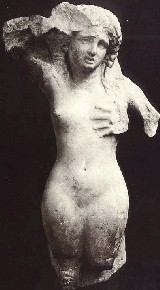 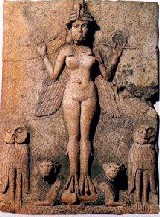 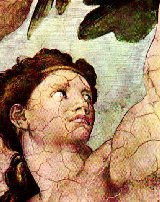 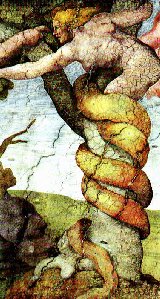 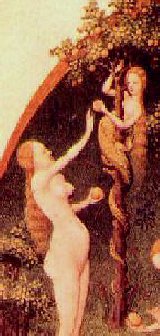 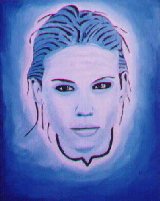 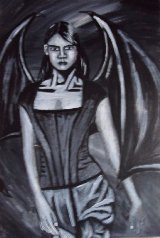  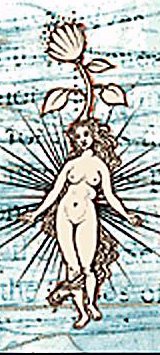 |